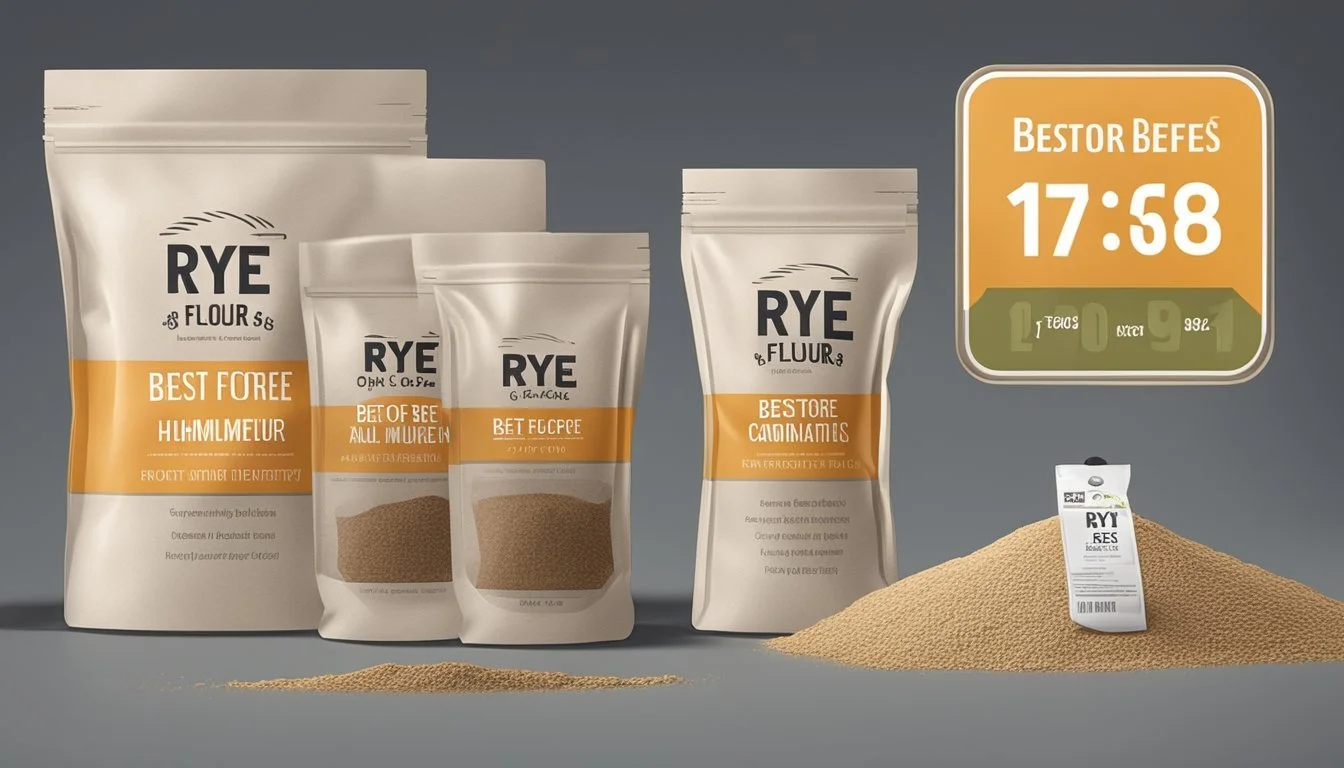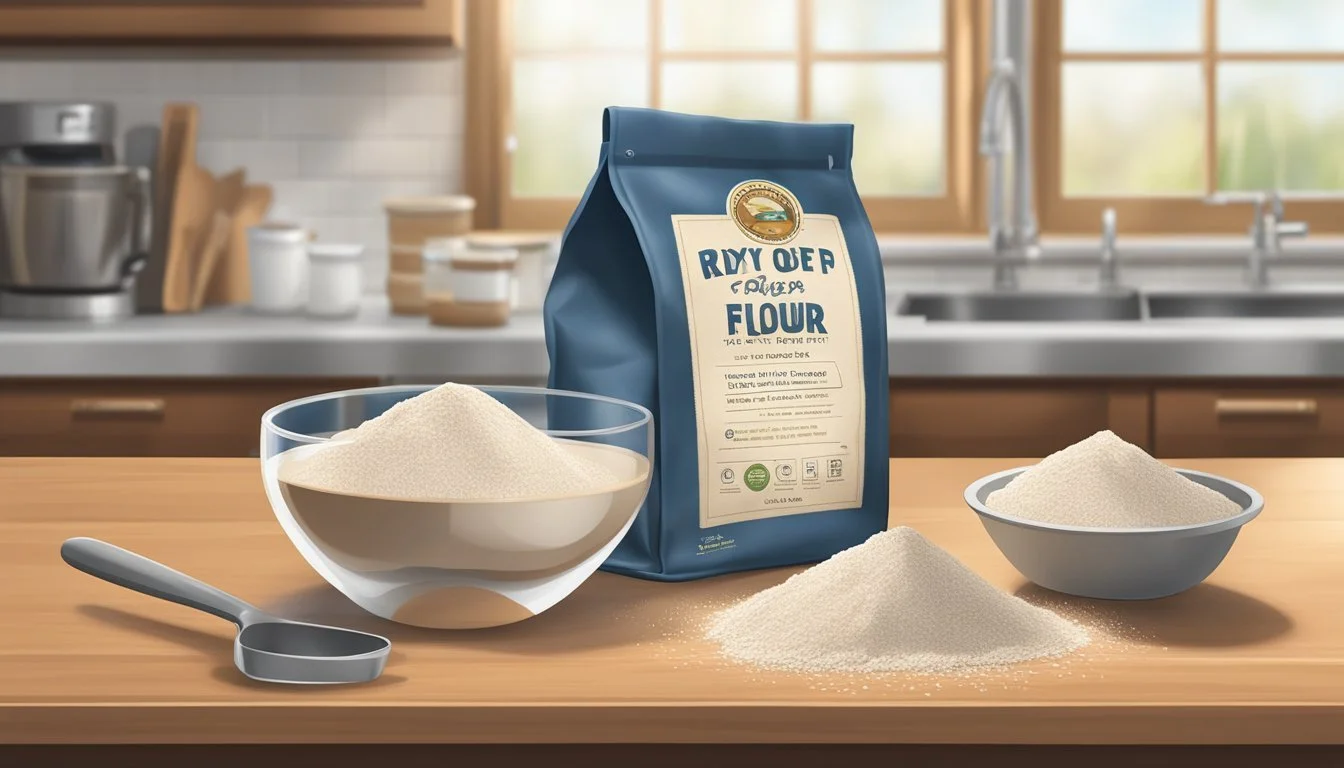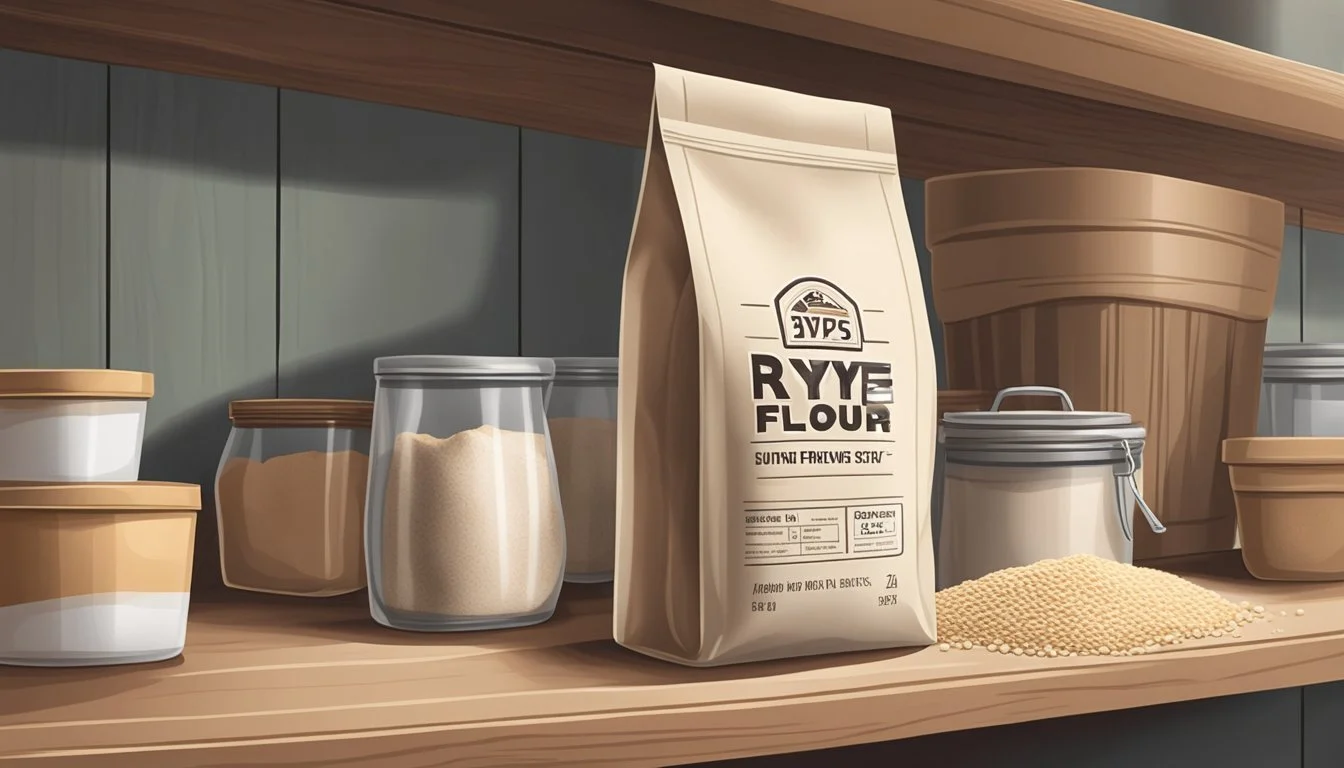How Long Does Rye Flour Last?
Understanding Shelf Life and Storage Tips
Understanding the shelf life of rye flour is important for both culinary quality and food safety. Rye flour, like other flours, does not last indefinitely. When stored under optimal conditions in an airtight container, its freshness is maintained by preventing oxidation and contamination from moisture and pests. The longevity of rye flour can be influenced by factors such as its processing, packaging, and storage environment.
Under typical pantry conditions, rye flour can remain fresh for several months. The actual shelf life, however, varies depending on whether the flour is white or dark rye, and if it has been opened or remains sealed. Unopened dark rye flour can last between 6 months to a year, while once opened, it is best used within 3 to 6 months to ensure peak flavor and prevent spoilage. To further extend freshness, some opt to refrigerate or even freeze rye flour, with the freezer option potentially preserving it for up to 6 months.
It's essential to note that the storage place should be cool, dry, and away from direct heat or light which can accelerate degradation. Regular checks for any changes in odor, color, or texture can help in identifying flour that is past its prime and ensuring that rye flour is always used at its best.
Understanding Rye Flour
Rye flour, derived from the rye grain, is distinctive for its deep, earthy flavor and complex nutritional profile. This section delves into the specifics of rye flour's composition and the varieties available.
Composition of Rye Flour
Rye flour consists of all parts of the rye grain—bran, germ, and endosperm. Compared to wheat flour, rye flour often retains more of its bran and germ in the milling process, making it a whole grain flour rich in fibers and nutrients. Rye flour is not gluten-free; it contains gluten, although in lower amounts than typical all-purpose wheat flour. Its composition lends itself to a denser and darker baked product, which is often favored for some breads.
Types of Rye Flour
There is a variety of rye flour types that bakers can choose from:
Light rye flour: Sifted to remove most of the bran, light rye flour is closest in texture to all-purpose wheat flour.
Medium rye flour: Contains more bran than light rye flour, and is often used in traditional rye bread recipes.
Dark rye flour: The darkest type, retaining substantial bran and germ, delivering a stronger flavor and denser texture.
Pumpernickel flour: A coarsely ground whole grain rye flour, it includes all parts of the rye berry and boasts a robust flavor.
These types are distinct from other grain flours such as spelt, buckwheat, almond, quinoa, millet, amaranth, and barley, which cater to different dietary needs and flavor profiles, and can alter the texture and nutritional content of baked goods.
Shelf Life Determinants
The shelf life of rye flour is influenced by several key factors that can either preserve its quality or hasten its spoilage. Understanding these factors is essential for maintaining the flour's freshness and usability.
Factors Affecting Shelf Life
Storage Conditions: The quality and shelf life of rye flour largely depend on how it is stored. To maximize its longevity, it should be kept in a cool, dry place away from direct sources of heat and light which can spur the oxidation process. Airtight containers are preferable as they reduce exposure to air and moisture, mitigating the risk of spoilage.
Composition: Rye flour contains oils and fats that are prone to rancidity. The higher fat content can shorten its shelf life compared to flours with less fat. This sensitivity to oxidation necessitates careful storage to prevent the development of off-flavors.
Signs of Spoilage
Odor: A telltale sign that rye flour has spoiled is a noticeable change in smell. If it emits a rancid or bitter odor, it's likely that the fats within the flour have begun to deteriorate.
Appearance and Texture: The presence of mold or clumps in the flour can indicate that moisture has compromised the product. Additionally, if the flour smells off or the color has darkened, these are indicators that the flour is no longer of optimal quality and should not be used.
Proper Storage Solutions
To maintain the freshness and quality of rye flour, proper storage is essential. Here are methods to store rye flour at home and techniques to extend its shelf life through freezing.
Storing Rye Flour at Home
Rye flour should be kept in an airtight container such as a plastic or glass container with a tight seal. Storing rye flour in a cool, dry place—like a pantry or cupboard—protects it from the adverse effects of moisture and temperature changes. For short-term storage, mason jars, mylar bags, or even vacuum-sealed bags are excellent options to prevent oxidation and the entry of contaminants.
Extending Shelf Life Through Freezing
For long-term storage, placing rye flour in the freezer can greatly extend its shelf life. Use an airtight container or a vacuum sealer to package the flour. If using standard containers, consider double bagging with plastic bags for added security against freezer burn. Labeling the container with the date of storage ensures proper rotation and usage within the optimal timeframe. Freezing can keep rye flour fresh for up to six months, retaining its flavor and nutritional properties.
Handling and Usage
Proper handling and usage of rye flour are crucial for maintaining its freshness and ensuring the quality of the baked goods it produces. Adhering to best practices can minimize food waste and maximize the flour's shelf life.
Using Rye Flour in Baking
When baking with rye flour, one should be mindful that it behaves differently than wheat flour. It contains less gluten, which is the protein that helps dough rise and maintain its structure. Due to this characteristic, rye flour often requires careful mixing to avoid overworking the dough, which can result in dense, heavy breads or cakes. For optimal results, bakers commonly blend rye with wheat flour to improve texture and elasticity. This versatile ingredient imparts a distinct flavor to baked goods, from rustic breads to traditional rye cakes.
When to Replace Rye Flour
The freshness of rye flour is vital for the quality of the baked goods. Flour can spoil due to factors like moisture, air exposure, and pests. Signs that rye flour needs replacement include an off smell, a change in color, or any signs of moisture that might indicate spoilage. It's generally advised to adhere to the expiration date provided by the manufacturer, but if stored properly, rye flour can last beyond that date. If stored in an airtight container in a cool, dry place, rye flour can typically last up to 6 months; refrigeration or freezing can extend this to about a year.
Ensuring proper handling and usage of rye flour is crucial in baking and in reducing food waste. Careful attention to the flour’s condition and storage can greatly influence the success of the baked goods it produces.
Health and Safety
When considering the health and safety of rye flour, consumers should be aware of shelf life as it pertains to both quality and potential health risks. Like all flour, rye flour can degrade over time.
Shelf Life: Properly stored, unopened rye flour generally lasts 6-12 months past its expiration date. Once opened and stored correctly, it should remain good for up to six months.
Storage Conditions: Health risks increase if rye flour is not stored in a cool, dry place. Moisture or heat can cause the growth of mold and bacteria.
Whole Grain vs. Refined Flours: Whole grain rye flour may spoil faster than refined flours due to its higher oil content.
Gluten-Free Options: For those with gluten sensitivities, gluten-free flours such as coconut flour may have different shelf lives and must be checked for spoilage signs accordingly.
It is crucial to inspect flour before use:
Check for Off Odors: A rancid or musty smell indicates that flour should not be consumed.
Visual Inspection: Any signs of mold, clumps, or discoloration suggest contamination and the flour should be discarded.
As for specific health concerns, individuals with allergies or sensitivities to wheat should avoid rye and all-purpose flours, as they contain gluten. Ingredients listed on packaging should always be reviewed to ensure safety for those with dietary restrictions.
Safety Measures for Handling Flour:
Avoid Raw Consumption: Uncooked flours may carry foodborne pathogens. Always cook flour thoroughly before consumption.
Cross-Contamination: Keep flours separate to prevent cross-contamination, especially when dealing with gluten-free alternatives.
Remember, when using specialty flours like cake flour or ingredients such as coconut flour, shelf life may vary, and safety guidelines specific to these products should be followed.
Purchasing and Processing
When purchasing rye flour, consumers should consider the type of rye flour needed for their recipes and the processing method used to produce it. Rye flour can vary in texture and flavor based on how it's milled and whether it's made from white or dark rye seeds.
Selecting the Right Rye Flour
Dark Rye Flour: Typically milled from the entire rye berry, dark rye flour contains more of the bran and germ, offering a denser, whole grain product. This type of rye flour imparts a deeper, earthy flavor to baked goods.
White Rye Flour: Milled from just the endosperm of the rye berry, white rye flour more closely resembles white all-purpose flour in texture but retains the distinct rye flavor. It's a suitable choice for lighter, softer breads.
Rye Flour from Bulk Bins
Purchasing from Bulk Bins: Consumers can often find rye flour available in bulk bins, which allows for the purchase of specific quantities.
Advantages:
Freshness: Bulk bins may have a higher turnover, potentially offering fresher flour.
Quantity: Shoppers can buy exactly the amount they need, which is beneficial for those who use rye flour infrequently.
Risks:
Contamination: There's a higher risk of cross contamination from other bulk products, a concern for those with allergies.
Storage: After purchase, it's crucial to store rye flour in a tightly-sealed container to protect it from oxidation and pests.
In summary, when purchasing rye flour, it's important to consider whether whole grain, dark rye flour or a lighter white rye flour best suits your culinary needs. If choosing to purchase from a bulk bin, be sure to transfer the flour to an airtight container at home for optimal shelf life.








